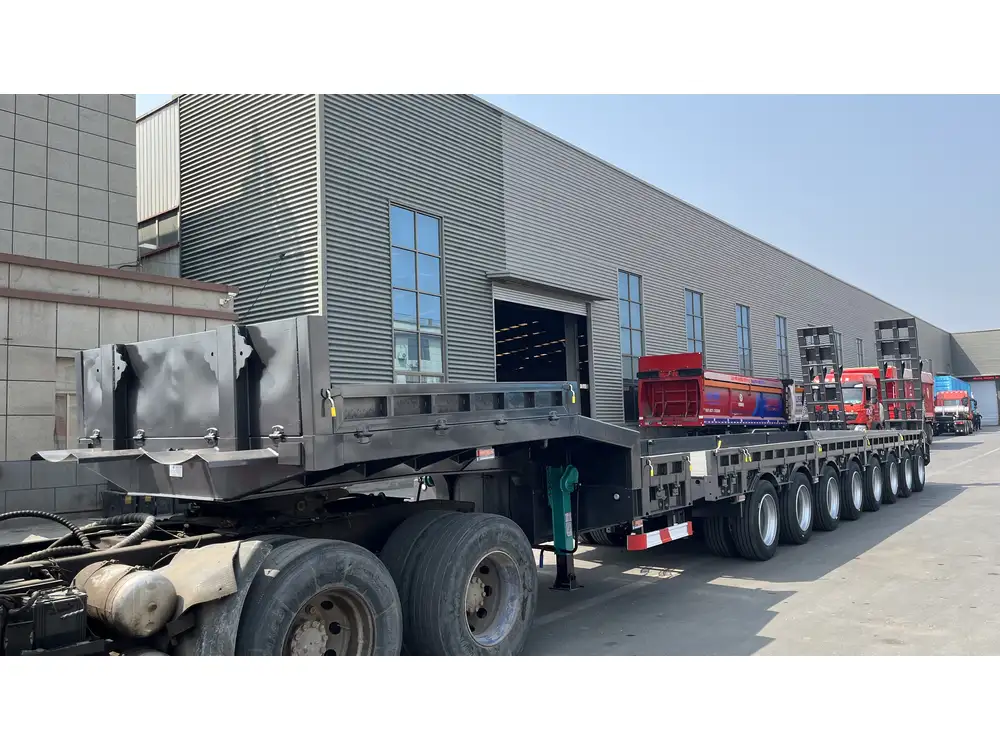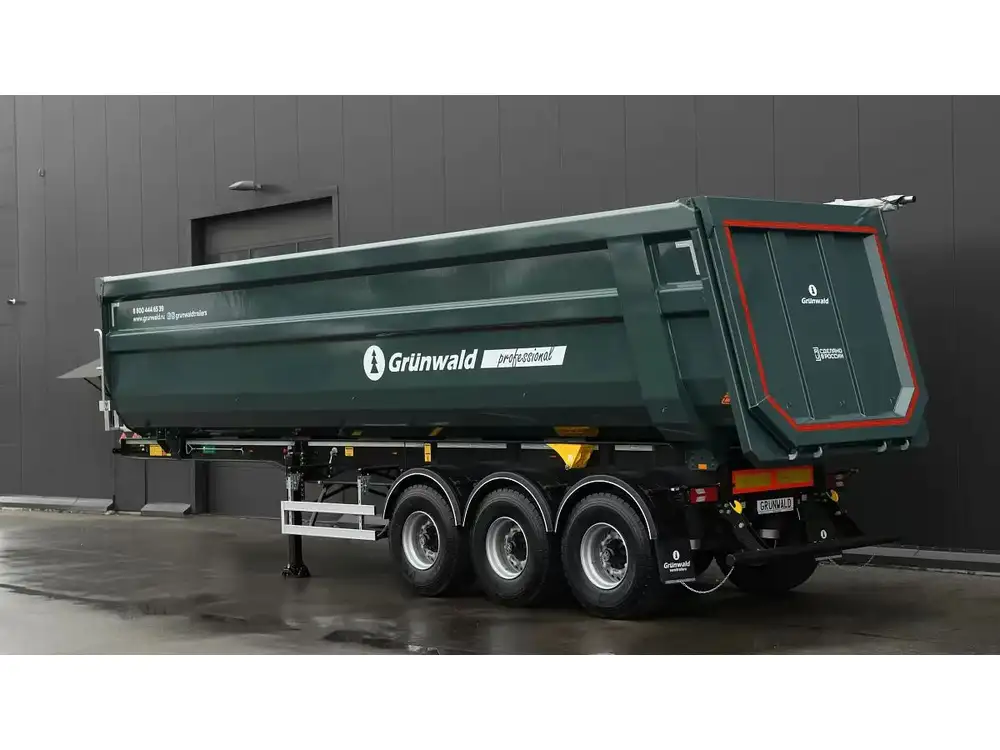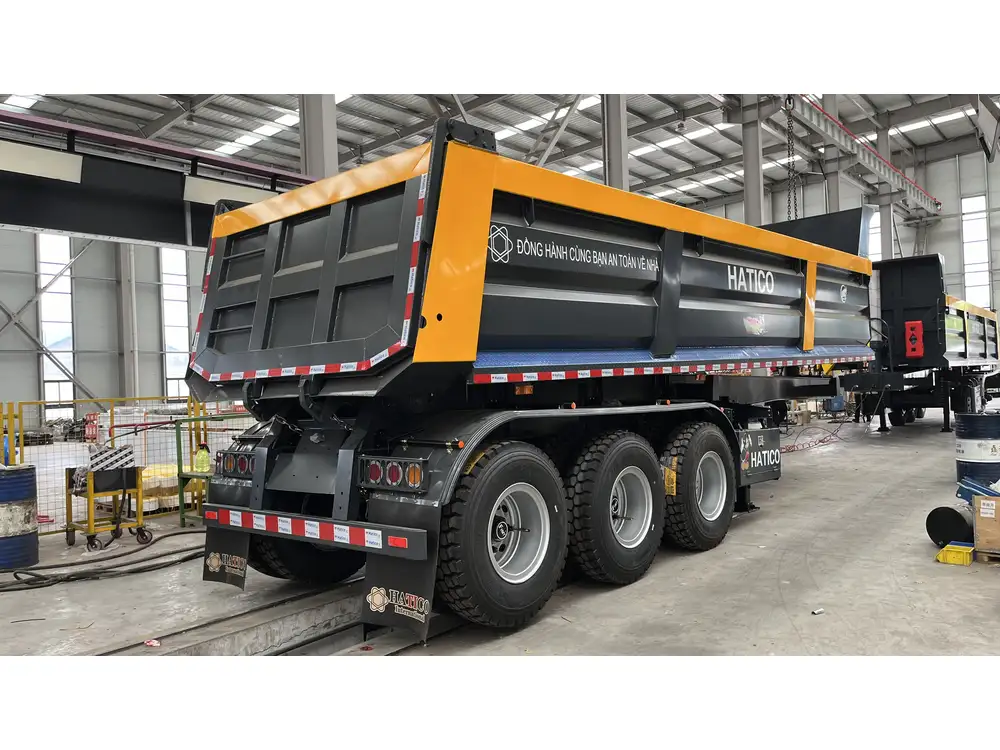Moving intermodal containers on trailers is a critical component of logistics and transportation, enabling goods to traverse vast distances with efficiency and speed. This guide provides an in-depth look at the best practices, methods, and technologies involved in safely and effectively moving intermodal containers.
Understanding Intermodal Containers
Intermodal containers, often referred to as shipping containers, are standardized cargo units designed for seamless transport across different modes of transportation—ships, trucks, and trains. These containers typically come in two sizes: 20-foot and 40-foot, and they are built to rigorous specifications to ensure durability and security during transport.
Key Features of Intermodal Containers
| Feature | Description |
|---|---|
| Dimensions | Standardized lengths of 20 ft and 40 ft |
| Material | Made from high-strength steel |
| Weatherproof | Designed to withstand harsh weather conditions |
| Stackable | Can be stacked, maximizing space in transit |
| Secure Locking Mechanism | Equipped with twist locks to secure contents |

Preparing for the Move
Before moving an intermodal container, it is vital to conduct thorough preparations. This phase includes assessing the container’s contents, determining the logistics involved, ensuring compliance with regulations, and choosing the right equipment for the job.
Steps to Prepare for Moving an Intermodal Container
Inspect the Container: Ensure that the intermodal container is in good condition. Check for any damages that could affect the move.
Determine Weight and Distribution: Weigh the container and ensure the weight is evenly distributed. Overloading on one side can cause instability during transport.
Check Local Regulations: Different regions may have specific regulations regarding the transport of intermodal containers. Verify required permits and comply with transportation laws.
Select the Trailer: Choose an appropriate trailer type. Common options for transporting intermodal containers include:
- Flatbed Trailers: Best for easy loading and unloading.
- Chassis Trailers: Designed specifically for intermodal containers, allowing for secure attachment.
- Step Deck Trailers: Ideal for taller containers to comply with height restrictions.
Plan the Route: Choose the best transportation route considering factors like road conditions, weight limits on bridges, and any potential hazards.
Moving the Intermodal Container: Techniques and Tools
Moving intermodal containers requires precise coordination and appropriate equipment. Below are essential techniques and tools used in the process.

Tools and Equipment for Moving Intermodal Containers
| Equipment | Description |
|---|---|
| Forklifts | Used for loading and unloading containers |
| Cranes | Essential for lifting containers at ports |
| Straps and Chains | Necessary for securing containers during transport |
| Container Handlers | Specialized machines designed for moving containers |
| Tractors | Heavy-duty trucks that pull trailers |
Step-by-Step Process for Moving an Intermodal Container
Positioning the Trailer: Align the trailer with the intermodal container, ensuring a smooth transition during loading.
Using the Appropriate Equipment for Loading: Utilize forklifts or cranes to place the container onto the trailer securely. If using a chassis trailer, connect the container using the twist locks to ensure it is firmly secured.
Securing the Load: Use straps and chains to further secure the container, minimizing movement during transit. Check the tightness and adjust if necessary.
Inspection Before Departure: Conduct a final check to confirm that everything is secured, the weight is balanced, and that the necessary permits are on board.
Driving with Caution: While on the road, be mindful of factors such as speed limits, road conditions, and sudden movements that can affect the load stability.
Safety Protocols
Safety is paramount in the transport of intermodal containers. Follow this checklist:
Personal Protective Equipment (PPE): Ensure all personnel involved are wearing appropriate safety gear—helmets, gloves, high-visibility vests, and steel-toed boots.
Training and Certifications: Ensure that all team members are adequately trained for heavy machinery operation and container handling.
Emergency Procedures: Have a plan in place for accidents or unexpected events. This should include contact information for emergency services and procedures for reregistration of cargo.

Best Practices for Loading and Unloading
To minimize risks and enhance efficiency in loading and unloading a container, follow these best practices:
Use a Standardized Loading Technique: Always load heavier items towards the bottom and center of the container for better weight distribution.
Minimize Internal Movement: Use dunnage or packing materials to reduce internal movement during transport.
Clear the Loading Area: Ensure the loading area is clean and free of obstacles to allow for smooth operations.
Proper Unloading Procedures: When unloading, perform a thorough inspection of the container for any signs of damage before removing it from the trailer.
Common Challenges During Moving
Weight Restrictions:
- Solution: Know the weight limits for local roads and adjust your container’s load accordingly.
Weather Conditions:
- Solution: Monitor weather forecasts and plan your moving schedule around potential adverse weather conditions.
Traffic Delays:
- Solution: Anticipate traffic patterns and consider alternative routes to avoid congested areas.
Innovations in Moving Intermodal Containers
Advancements in technology and equipment are transforming how intermodal containers are moved. Here are some notable innovations:

Tracking and Monitoring
GPS Tracking Systems: Allow real-time monitoring of the container’s location, enhancing security, and providing valuable data for route optimization.
Telematics Systems: Improve efficiency by monitoring vehicle performance and container status, allowing for timely repairs and scheduling.
Automated Systems
Automated Guided Vehicles (AGVs): Facilitate the movement of containers in warehouses and ports, reducing the manpower required and minimizing human error.
Robotic Loaders and Unloaders: These systems can effectively handle heavy lifting, improving cargo handling speed and efficiency.
The Future of Container Transportation
The future of intermodal container transportation is paved with opportunities for innovation and sustainability.

Sustainable Practices
Electrification of Fleets: The push for electric vehicles (EVs) is gaining momentum. Transitioning to electric trucks for transporting intermodal containers has the potential to significantly reduce carbon emissions.
Optimizing Shipping Routes: Advanced algorithms and software will help logistics companies in route planning, ensuring shorter delivery times and reduced fuel consumption.
Smart Containers
Integrating IoT technology within containers can allow for enhanced monitoring of conditions such as temperature and humidity, providing real-time data to operators for better cargo management.
Conclusion
Moving an intermodal container on a trailer is a sophisticated process that blends efficiency, safety, and compliance with regulations. Manufacturers and logistics providers must invest in modern practices and technologies to overcome challenges and meet the growing demands of the industry. By adhering to best practices and embracing innovations, we can enhance the efficiency of transporting intermodal containers and contribute to a more sustainable logistics environment.
Through thorough preparation, proper execution, and continual improvement, moving intermodal containers on trailers can be a seamless process, ultimately benefiting businesses and the logistics network at large.



